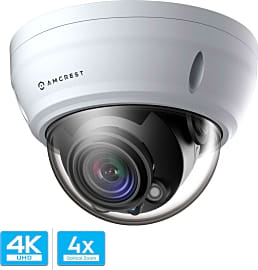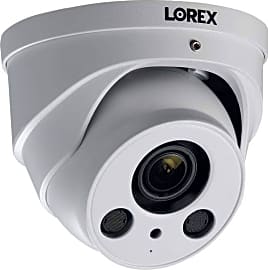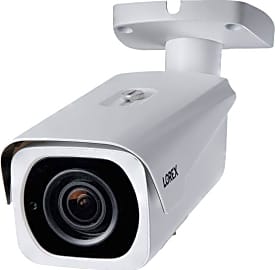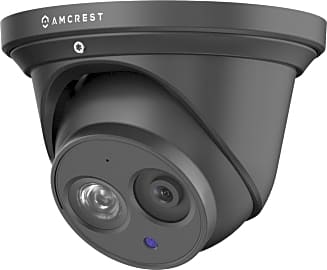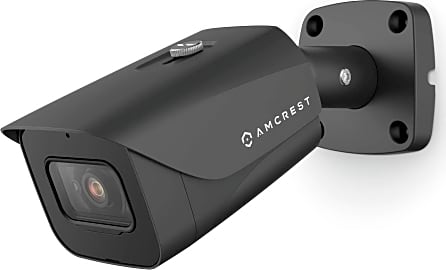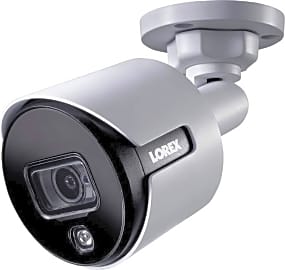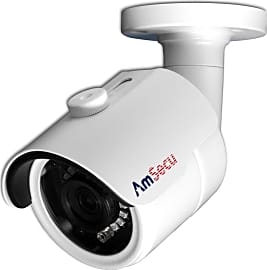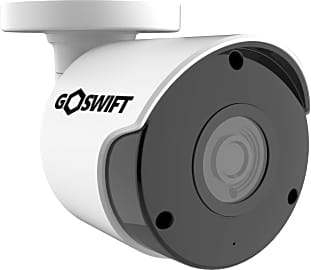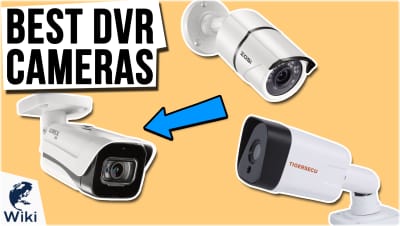The 10 Best 4k Security Cameras

This wiki has been updated 26 times since it was first published in December of 2018. Keeping an eye on your property is easier than ever, and the 4K security cameras on our list offer you the ability to do so in the highest resolution available. They let you clearly see important details, like faces and license plate numbers that can lead to the conviction of criminals, and we ranked them here by their image quality, night vision capabilities, durability, and ease of installation. When users buy our independently chosen editorial recommendations, we may earn commissions to help fund the Wiki.
Editor's Notes
November 05, 2020:
The actual process of installing one of these cameras depends a bit on the additional hardware or software you may or may not be using with it. In the case of the Arlo Ultra Wireless, for example, it comes with is recorder and control station, and the camera itself acts merely as a camera, where the Lorex Motorized Varifocal is an example of a model that works best when paired with its company's recording devices. There are other models that can utilize micro SD cards and work independently of a home station, like the Amcrest UltraHD Outdoor, but if it's your intention to hook up more than one camera around a given space, a full DVR camera set might be a better option.
The other model I wanted to talk about was the Amcrest UltraHD Outdoor Bullet POE, which is an upgrade to the offering included on our previous list. This is a case where the company expects you to hook it up to a base station, so they've gone ahead and gotten rid of the micro SD card slot. This might be a deal breaker for anyone who only needs one camera and doesn't want to save to the cloud or deal with any extraneous hardware, but for a multi-cam setup its increased night vision range is something worth considering.
December 21, 2018:
Amcrest and Lorex currently create the widest variety of 4K options on the market, with solid offerings from either company. Nothing can quite match the image quality, extra features, and user interface of the Arlo system, however, even if it is quite a bit more expensive than the rest of the group.
Why You Need 4K Security Footage
If you think you can get away with a chintzy security camera shooting at 720i at 12 frames per second, then you’re either off your rocker or you’re the inside man on the job.
If you’ve ever watched a police procedural, you’ve no doubt seen a scene in which the detectives get their hands on a picture or some video footage that captures their suspect in the heat of a crime. The only problem is that the footage is too dark, or too grainy, or it’s just a reflection of a face in a window. Whatever the thing preventing our protagonists from clearly seeing the perpetrator, there’s a simple solution: introduce a techy character with a big computer and have them “zoom and enhance.”
The zoom and enhance trope is used over and over again in film and television, and it always reveals what the characters are looking for — sometimes proof of guilt, sometimes proof of innocence, but always proof. Clear, undeniable proof. The only problem is that much of this source footage comes from lesser security cameras or even old-fashioned, pre-digital revolution CCTV. There is no software or algorithm on the planet that can retrieve nuanced facial data that wasn’t initially captured by the camera. It’s pure movie magic.
If you think you can get away with a chintzy security camera shooting at 720i at 12 frames per second, then you’re either off your rocker or you’re the inside man on the job. When you zoom in on grainy, unclear footage, it only gets grainier and less clear. But if that footage was even higher in resolution than your monitor, you’d be in business.
This is why 4K footage is so vital, even if you never intend to view it on a 4K monitor. For the most part, you’ll be viewing this footage on a small TV or computer screen, and its 4K resolution won’t make a difference at that distance or screen size. But when you need to zoom in on the face of a criminal, you’ll be able to do so without losing resolution on a normal HD screen. That’s because 1080 HD derives its name from the fact that it consists of 1,080 pixels along its Y axis, and 1,920 pixels along its X axis, for just over 2 million total pixels. 4K footage gets its name from the X axis, which boasts 3,840 to its Y axis’ 2,160. That totals more than 8 million pixels.
Essentially, that means you can take footage shot with a 4K camera and zoom in 400 percent without missing a single detail of someone’s face in HD. And when it comes to the standard of evidence in a court of law, that can make all the difference.
What To Look For In A 4K Security Camera
When choosing a 4K security camera, what you’re actually keeping an eye on will have more to do with your purchase than anything else. A store owner’s needs are going to be a little different that a homeowner’s, after all.
In a store, for example, your placement options won’t be quite as limited as in a home. You may not have to concern yourself with the aesthetic impact of cameras on the space, and they may in fact act as deterrents if they’re more visible. This becomes an interesting point when discussing the night vision capabilities of a given camera.
You probably noticed these on many of the models on our list, but weren't entirely sure what their purpose was.
Most security cameras gather their night vision footage with the aid of infrared LED lights that surround the camera lens. You probably noticed these on many of the models on our list, but weren't entirely sure what their purpose was. They emit light in the infrared spectrum, which is invisible to the naked eye, but that can be picked up by the cameras’ sensors. The stronger the LEDs and the better the sensor, the farther into a given space these cameras can see in the dark, which is why their night vision specs are usually measured in distance.
To go back to the store example, since you can place your cameras pretty much anywhere, you can get away with a shorter throw from the infrared lights. Simply move the camera closer to target areas like entrances and cash registers.
For homeowners, you’ll want a camera with a good night vision reach, but you also may want to consider viewing angles, as well. Placement of a security camera is a little more sensitive in the home, where you usually don’t want it to call too much attention to itself. A wider viewing angle will allow you to see more of even the smallest rooms without sacrificing the look of the space to the placement of the camera. Just be aware that a wider viewing angle will also often decrease night vision performance and the clarity of distant objects in the frame.
Some Other Ways To Keep You Safe
Investing in a 4K security camera is a great way to start to keep your family or your business safe. There are some additional things you can do to achieve this, however, and we wanted to go over some of them here.
There are some additional things you can do to achieve this, however, and we wanted to go over some of them here.
For starters, you may have noticed that these cameras are smaller than ever, which can make them less of a deterrent to certain thieves who might not notice them. Fortunately, there are dummy cameras out there that are designed to be seen, but require no maintenance or complicated setups. You simply hang them and let them ward off evildoers.
It’s also a good idea to upgrade your locks. Modern technology has given us things like smart locks that can read biometric signatures, respond to custom pin codes, and even lock automatically after a given period of inactivity. And paired with a smart doorbell that has its own camera built-in, you can begin to build out your own personal Fort Knox.
Of course, if you really want a comprehensive system in place, you might want to look into an entire DIY security system, which will outfit you with several cameras, motion sensors, and hard drives for storing footage. They often come with emergency response services that can cost a monthly fee, but can you really put a price on peace of mind?


